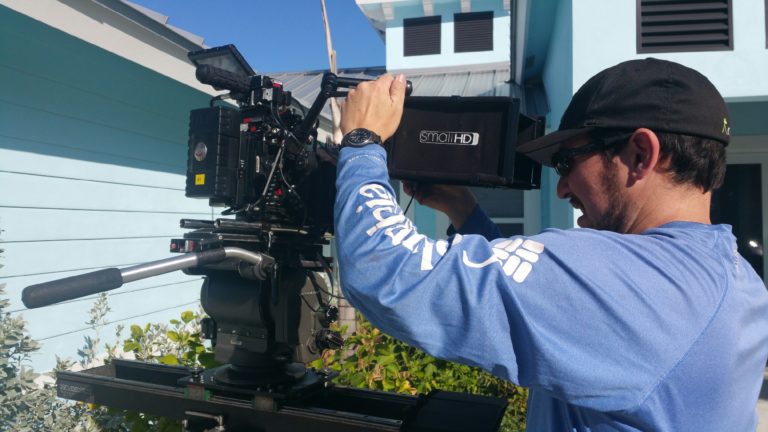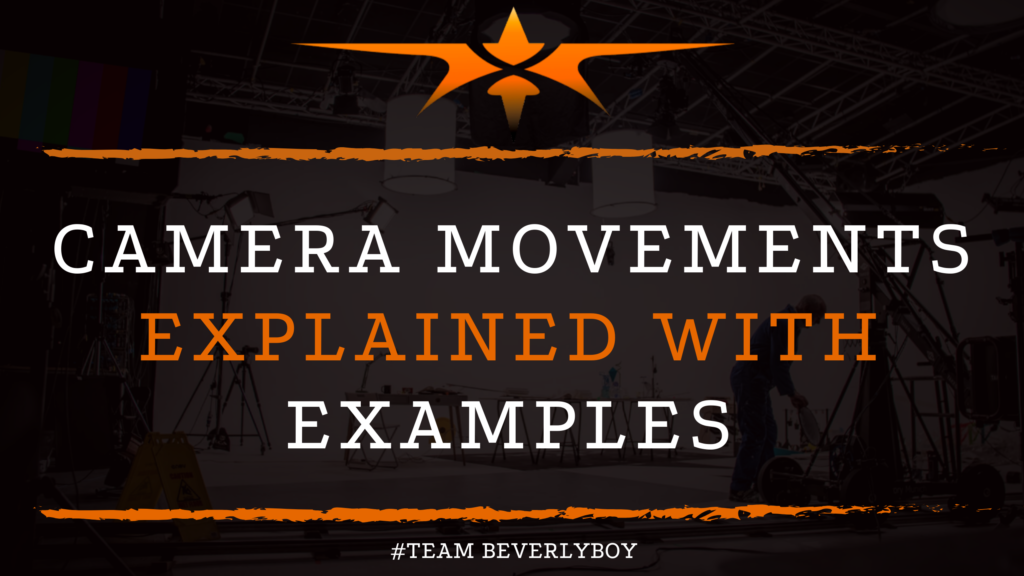Camera Movements Explained with Examples
Many different camera movements exist to make a production come together. There are options relative to each angle and shot and position. Combining the movements with various other cinematography techniques will achieve the desired look. In fact, there are endless options when you use camera movements and techniques to make the most out of your production. Follow along as we show you.

CAMERA PAN
The camera pan involves the cameraman moving the camera along a horizontal axis to the left or right so that you can capture a wider area of the set. This is often used to establish the location of a story. Camera pan shots do not move the actual camera base, as it remains fixed to a certain point.
Rotating the camera in a way that allows the position to remain in place while the filming direction changes is used to follow characters as they move or to fit more than one character into a frame. Panning is also sometimes used in a landscape to help create a sense of the place and show the location.
CAMERA TILT

The camera tilt is used similar to the camera pan but the camera looks up and down rather than side to side. With the camera tilt, the motion allows for a larger area of the scene vertically to fit into a single frame.
Camera tilting is produced by slowing moving the camera up or down while the unit itself remains fixed. This allows for the appearance of a bigger object or can be used to make a subject appear larger.
CAMERA ZOOM
Camera zoom is the most widely used process or camera movement there is. This involves using the camera to add interest to a shot by creatively zooming in out of an area.
Camera zoom is important as it allows the object or person in the shoot to become the main event of the shot. Use camera zoom to create a sense of energy for the shoot or to build a fast-paced scene.
PEDESTAL SHOT
The pedestal shot is used to move the camera upwards or downwards relative to the subject in the frame. Unlike titling in which the camera stays fixed and just tilts, the pedestal shot involves fully moving the camera in its entirety up or down. The result is a view in which the subject can be framed at eye level within the camera viewer.
CRANE
The crane movement or crane shot involves using the camera on a jig or crane so that you can achieve a closer or more elevated shot. This is used to improve the usability and repeatability of the shot so that the camera can achieve the desired view. Using the crane movement, the camera crew can highlight the loneliness of a character or show their fate in a situation that is otherwise tricky.
TRUCK

Camera trucking is similar to dollying in that you are moving the camera but you move the camera from left to right rather than forward or backward. The entire camera and associated equipment is moved when you truck the camera so that there is a fluid motion and there are no signs of jerking or tweaking as you move the camera from left to right.
STEADICAM
Steadicam shots involve the movement of the camera with stabilized motion so that there is a smooth and isolated movement. The smooth shot that comes from a Steadicam shot is only achieved with a professional cinematographer that truly knows and understands how to work the Steadicam. This comes with time and experience in the industry.
HANDHELD

Handheld shooting involves the use of the camera in a way that involves actually holding it rather than using a tripod. The operator holds the camera so that they can use various camera techniques and movements such as panning, tilting, zooming or other combinations of these movements by simply moving their feet in the appropriate direction.
Handheld shots are bouncy and not always ideal but they can be used for capturing news or a documentary film.
RACK FOCUS
Rack focus is a shot that involves adjusting the camera lens from the beginning so that the image is rather blurry and then readjusting to shift the focus so that the image becomes crisp. This can also be performed backwards such that you would adjust the camera so that the shot is crisp to begin with and then blurry to end.
DOLLY

The dolly shot involves moving the entire camera so that it can become closer or further from the subject. The dolly shot typically takes place along a track or with a motorized vehicle that moves the camera forward or backward.
The movement of a dolly shot is fluid and uniform so that the appearance is as if you were walking closer or further from the subject.
FLOATING CAM SHOT
The floating cam shot is another term used to describe a Steadicam shot. This is the process of using the Steadicam technology to capture the shot in a way that allows for maximum stability and movement. Professional cinematographers can capture a wide range of camera movements and angles using the Steadicam.

